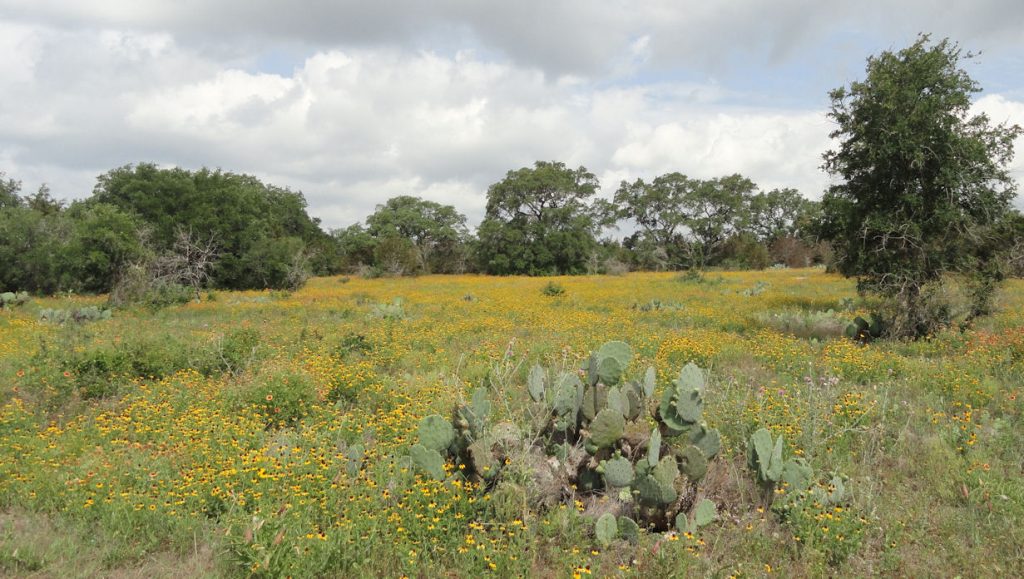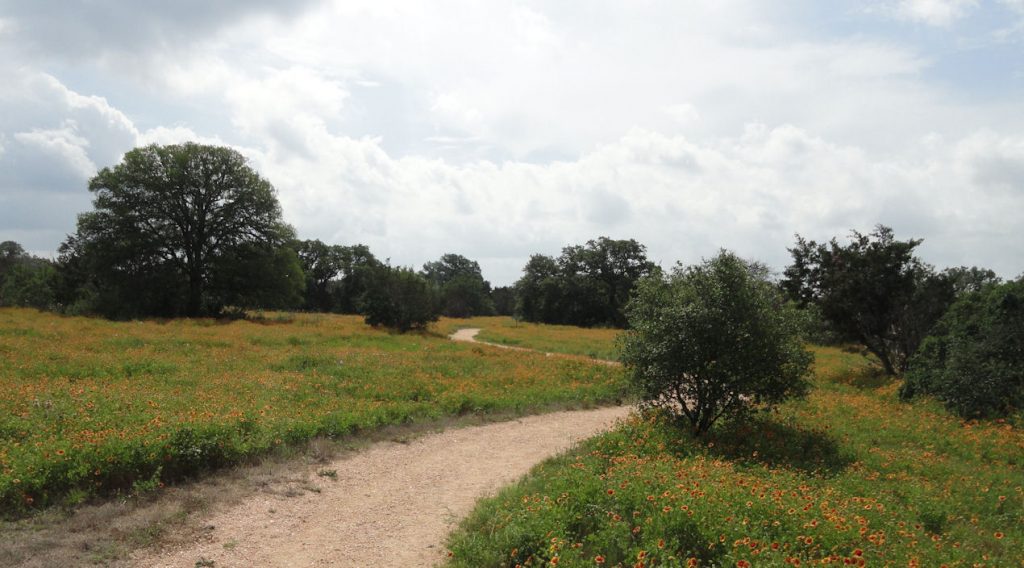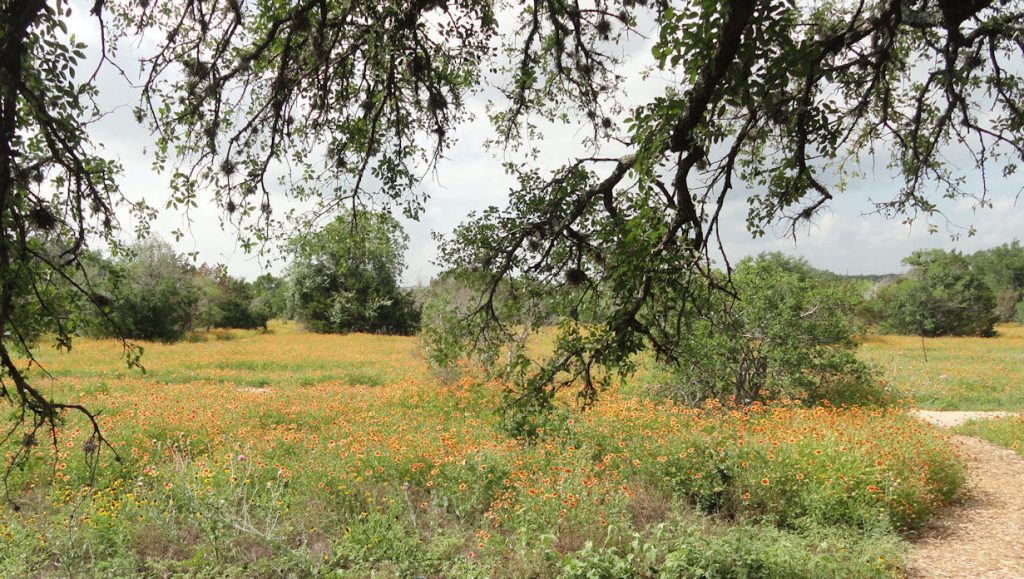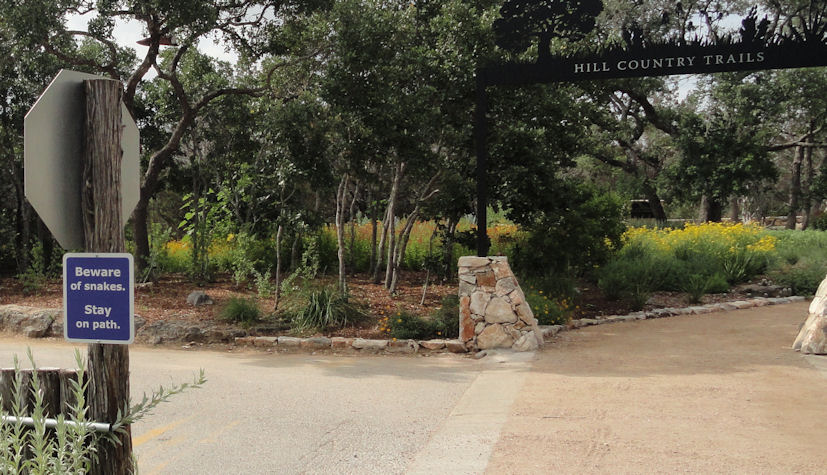
I really do need to get out. I just feel much better and can think more clearly when I have had my daily dosage of nature. I would go so far as to say that it restores the health of the soul. I got a good portion of this soul-saving medicine today at the Texas Arboretum and Lady Bird Johnson wildflower garden.

The park represents the Texas biomes, especially the hill country. It is an extraordinarily pleasant landscape, a kind of oak savanna. The signature combination is the grove of oak, often live-oak, among the wild flowers, as you see on several of these pictures. Savanna is not a final landscape, i.e. it requires a couple things to keep it in place. The two most important factors are fire and grazing. Before cattle, BTW, it was bison that did the grazing. The African savanna has the many large ungulates. The grazing was important both because of what it took and what it left behind. The grazing animals ate the grass but ate other plants differentially, creating more diversity. They also fertilized with their manure. It was important that the herds moved. The savannas recovered in between grazing. Fire needed to be frequent enough to keep the trees from filling in entirely, but not so frequent or hot to kill all the trees. In the absence of grazing and fires as described, the savanna will transform either into a closed woodland or a grassland w/o trees. South American grasslands, like those around Brasilia, were little different in their natural states, since they lacked those large grazing animals. Of course, fire is still a factor.

Both these factors are declining today in the U.S. We still have plenty of cows, but they are increasingly fed in lots or at least raised more intensively. Fire is often excluded to the extent that people can do it. In time, this will change the ecology. The arboretum folks are well aware of this and are figuring that into their management. I will write a little more about fire in another post.

The dead oaks above are the victims of oak wilt. This has been a big problem for live-oaks in Texas. It also affects red oaks to a lesser extent, white oaks not so much. The malady is spread by insects and root grafts. It can be managed by separating oaks. This might involve digging trenches so that roots do not graft. We also need to be very careful about pruning (never prune oaks January to June) and moving wood (do not move firewood that may contain the fungus). Even with good management, it is a devastating disease. It won’t be as bad as chestnut blight or Dutch elm, but it is altering the ecology over large swaths of our woodlands.

I am not sure how dangerous the snakes are. I know that there are indeed rattlesnakes in this sort of environment, but maybe the sign is more meant to encourage people to stay on the paths than the really warn about the rattlers.
